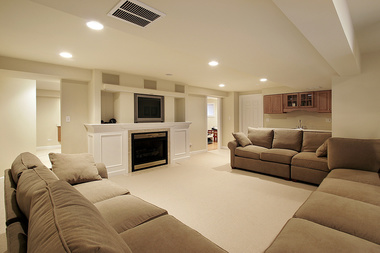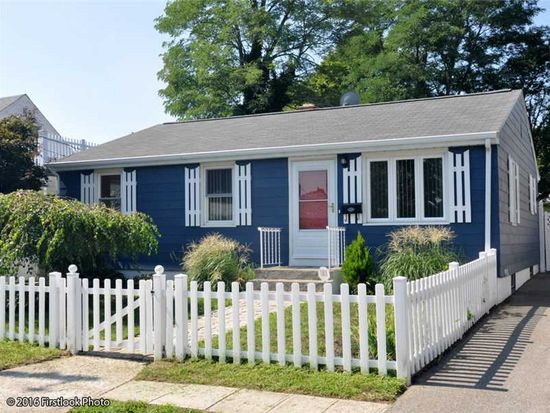Dehydrate the space
The worst place to hang out is a damp and drippy basement. Inspect your basement first to be sure there are no obvious pools of water or leaks. A few more tests include:
- Inspecting for water or insect damage in the structure of the basement.
- Repairing cracks in the foundation or around pipes; any crack wider than a pencil should be inspected by a structural engineer.
- Taping squares of plastic sheeting to the ground and walls to see whether moisture builds up in a couple weeks; if it does, check the foundation again.
- Checking to make sure the ground slopes down and away from your house.
- Checking the carbon monoxide ventilation system.
Planning your space
Your basement needs the right balance of natural light and darkness for the entertainment space. A lounge should have sunshine, but a TV room should be dark for best viewing.
- Be wary of adding too many rooms and doors — you don’t want your basement to feel like a string of rooms.
- Bedrooms must have a window from which to escape in an emergency.
- If you’re installing a bathroom or lights, be sure plumbing and electrical work is up to code. Indeed, all structural changes may need local approval.
Special rules for basements
With all the extra moisture, coolness and heavy-duty structure in your basement, the same rules aren’t going to apply below ground as they do above when beefing up the walls. Take note of the following guidelines — and make sure your contractor knows the rules, too:
- A vapor barrier is key to a moisture-free basement; lay it on the walls and floors for a few days, and check for moisture before continuing.
- Place your vapor barrier and foam insulation over the foundation walls and the stud frame, and install drywall on top of that. Your insulation may come with a vapor barrier on both sides.
- Mold will grow on standard drywall, so use wall panels meant for basements.
Decorating the results
Once all the behind-the-scenes work is done, the fun part can begin: the interior! Here are some recommendations for a beautiful basement:
- Consider adding dropped ceilings to provide easy access to electrical and plumbing lines. Check out the options at your local home improvement store; you’ll be surprised by how many handsome options you have.
- Recessed lighting helps ceilings seem high.
- Baseboard heating keeps your basement warm, and the rising heat warms upstairs, too.
Leave the space around your HVAC unit and water heaters unfinished so that it follows code. Plan on two to three feet around the equipment for the people who will be inspecting and repairing it.
Once you’ve finished your basement, you’ll feel like you won a marathon. Now you can fill it with your guests, kids and pets — if you allow them in your nice, new area!
After you do a great job with your new basement and when you want to sell your house make sure to contact us at Sell MY RI House.com for a fast all cash fair offer.

